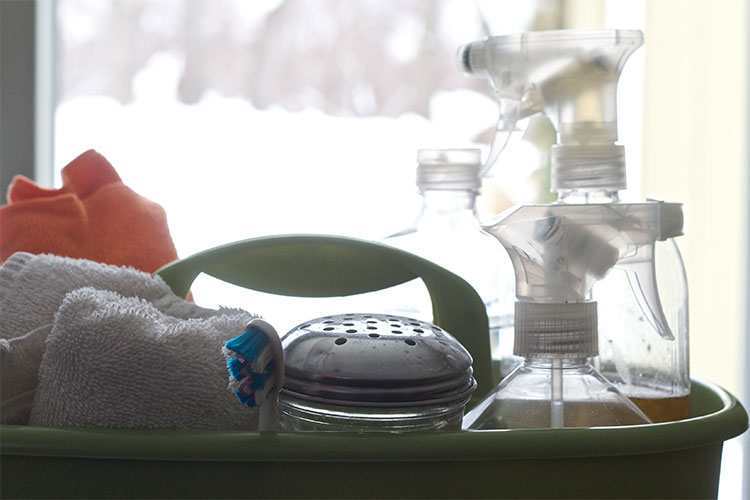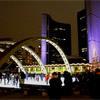Ever checked the ingredients on a so-called “green” cleaning product to learn it was filled with a list of unpronouncable chemicals? Yikes.
Keeping homes free from chemicals is even more important for parents with babies and young kids, whose brains are still developing.
For tips on safe cleaning products for kids, how to avoid harmful products, and how to keep homes healthy and green, we interviewed Maggie MacDonald, the Toxic Program Manager at Environmental Defence and Maureen Dennis, parenting expert and founder of WeeWelcome.com and spokesperson for Seventh Generation.
>>>Skip right to the most important ways you can make your home safer now.
What are the most toxic products people use regularly and should stop using right away?
Maggie: There are several consumer products that might contain unhealthy substances, but air fresheners are an easy target. Many people have fragrance allergies, and it can be difficult to find out what chemicals make up a fragrance or “parfum.”
Often, phthalates, which are linked to asthma, birth defects, and, in the case of DEHP, cancer, are added to fragrance to give it staying power. So opting for natural ways to freshen the air at home is advisable.
How do you know if a product is really “green”?
Maggie: Get to know the names of some of the common chemicals of concern, then check product labels to see if they are listed. Environmental Defence has a pocket shopping guide you can use.
Maureen: There are so many “natural” or “green” products out there it can be very confusing. Be sure to read the ingredient list and be aware of chemicals. Look for plant-based products instead.
What are some must-have non-toxic cleaning products?
Maureen: My favourite non-toxic cleaning products are definitely Seventh Generation’s plant-based dish detergent and laundry detergent.
[Note from Help!: We are big proponents of good ol’ vinegar, baking soda, lemon juice, and hydrogen peroxide, too. Natural and inexpensive! See smart natural-cleaning tips from the BC mom behind My Healthy Green Family.]
How worried should we be about chemicals in fabrics, like mattresses, carpets, and car-seat coverings? Most of us can’t afford to go all-organic. What’s an alternative?
Maggie: Putting an organic pillow on a bed can cut inhalation exposure to flame retardant chemicals if they are present in the mattress. Cleaning with a mop and wet cloth regularly will reduce the presence of pollutants in your home, and airing out items before you bring them into the home or car, can reduce exposure to off-gassing of toxic VOCs.
Maureen: One tip for “greening” fabric: combine baking soda and an essential oil and sprinkle it on fabric, let it sit for an hour or so, then vaccuum it up. This soaks up a lot of the impurities in the fabric and leaves it smelling fresher.
What easy things can parents do today to make their homes safer for kids?
Maggie: Simple steps like removing dust with a moist cloth, and opening a window to improve airflow, can make a significant impact in reducing indoor air pollution.
Some toxic chemicals persist in the environment for a long time, and dust is a major source of exposure to these substances, including banned pesticides like DDT, harmful PBDE flame retardants, and perfluorinated chemicals used in non-stick coatings.
You can reduce your exposure one step at a time. Start by learning a few key sources of exposure, then change buying habits as you get to know what to look for and avoid. Switching to non-toxic cleaning products is a good place to start.
Maureen: Three simple things:
1. Open your windows and let the fresh air into your home as often as you can.
2. Remove your shoes at the door, that alone will reduce the amount of dust, pollen, chemical and pests in your home.
3. Learn to read the labels of the cleaning products in your home for potential harmful chemicals and switch to plant-based products.
PHOTO: CHIOT’S RUN/FLICKR CC
>>> Read “5 Tips for Greener Cleaning at Home”


